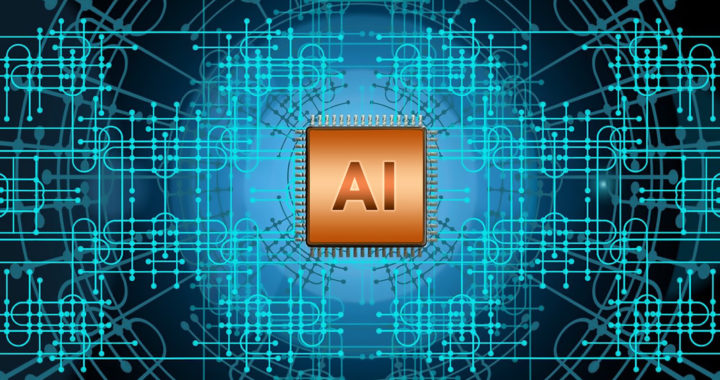AI accelerators are a special type of processor dedicated to handling tasks related to artificial intelligence applications. Their use in personal computers, smartphones, video game consoles, camera systems, and other smart devices marks the benefits of using hardware accelerators and parallel computing.
Understanding Artificial Intelligence Accelerators
The invention of AI accelerators is not credited to a single individual or organization. These hardware components are a product of research outcomes in the fields of computer science, computer engineering, and related fields such as artificial intelligence.
Intel was one of the first organizations to develop and introduce a similar hardware component with its ETANN 80170NX. Several similar chips emerged beginning in 1990. Digital signal processors were used to accelerate optical character recognition software.
There were also attempts to develop parallel high-throughput systems and field-programmable gate arrays aimed at powering computers dedicated to different workloads such as simulations for artificial intelligence models or algorithms.
It was at the beginning of 2010 when companies either developed dedicated processors or repurposed existing ones for handling tasks related to artificial intelligence. Smartphones began using AI accelerators in 2015 with the Qualcomm Snapdragon 820.
AI accelerators are now used in a range of computer systems or electronic devices because of their advantages. The emergence of the practical applications of AI has made these hardware components as important as central processors and graphics accelerators.
Principles and Purposes of AI Accelerators
Note that an AI accelerator is either a standalone processing chip or a processing unit or hardware component of an integrated circuit or a system-on-a-chip. The general principle behind AI accelerators is to accelerate tasks related to artificial intelligence such as machine learning applications and natural language processing.
Parallel computing is central to the purpose of these hardware components. A particular AI accelerator is designed to perform AI tasks much faster and more efficiently than traditional computing hardware such as a central processing unit.
This particular chip processes AI algorithms or models such as a particular machine learning or deep learning model, a specific artificial neural network architecture, or a set of instructions for processing languages or images. Most of these chips focus on low-precision arithmetic, novel dataflow architectures, and in-memory computing capability.
Nevertheless, based on the aforementioned, the purpose of AI accelerators is to lessen the workload on a main or central processing unit while ensuring that the entire system runs as efficiently as possible by providing parallel processing capabilities.
A particular smartphone that needs to process images taken from its camera system would use its built-in image signal processor as part of its computational photography feature. The same is true for a similar device that wants to run features or apps such as native predictive text, voice assistant, face recognition, and speech-to-text recognition.
Applications and Examples of AI Accelerators
Note that AI accelerators are also called coprocessors because their use demonstrates the principles of parallel computing. The most common example of an AI accelerator is a graphic processing unit or GPU. Note that a GPU is a specialized hardware designed for the manipulation of images and calculation of local image properties.
GPUs have been used for AI-related processing because the mathematical bases of image manipulation and neural networks are similar. Off-the-shelf GPUs are capable AI accelerators used in machine learning and deep learning tasks.
However, considering the expansion of the practical applications of artificial intelligence, several chipmakers and device manufacturers have either used retrofitted GPUs or developed dedicated processors or integrated processing units called application-specific integrated circuits or ASICs that are specialized to handle AI-related tasks.
Smartphones are known for using specialized types of AI accelerators that are built into their system-on-chips. Tech companies such as Google, Qualcomm, Amazon, Apple, Meta, AMD, and Samsung are all designing their own ASICs.
The following are the common examples of the applications of AI accelerators:
• Personal Computers, Smartphones, and Tablets: These consumer electronic devices have been made “smarter” through the use of AI-related technologies. The Neural Engine of Apple found in its A series and M series of chips power the AI capabilities of the iPhone, iPad, and Mac devices.
• Computational Photography in Camera Systems: Smartphones have become good at taking photos. High-tier ones are even better than some digital cameras. This capability comes from computational photography. The latest iPhone devices use their Neural Engine AI accelerator for their Deep Fusion feature.
• Robotics and Programmable Machines: Another application of AI accelerators is in the AI field of robotics. Programmable machines such as self-driving vehicles also use these hardware components in their computer systems. An AI accelerator equips a particular machine system with native machine learning capabilities.
• Improving Video Gaming Features and Experience: Devices for video gaming such as personal computers and video game consoles have benefitted from advancements in AI technology. The use of AI accelerators or a GPU with AI-related processing capabilities provides responsive and adaptive video gaming experiences.
• Other Commercial and Industrial Applications: Other applications of AI accelerators include increasing the efficiencies of data centers and network systems, generative artificial intelligence using deep learning or NLP models, and industrial robotics used in manufacturing and processing facilities, among others.
